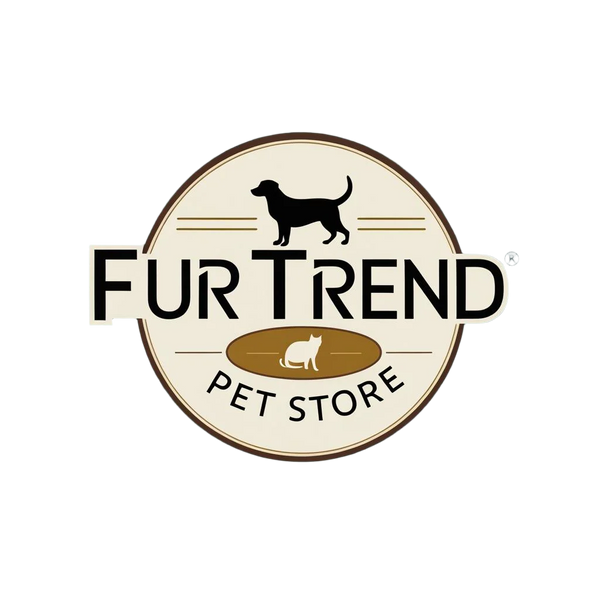
Hypoallergenic Pet Shampoo for Dogs with Sensitive Skin
Share
When it comes to caring for our furry friends, grooming plays a crucial role in maintaining their health and happiness. However, for dogs with sensitive skin, finding the right shampoo can be a challenge. Regular shampoos can often cause irritation, dryness, or allergic reactions. That’s where hypoallergenic pet shampoos for dogs with sensitive skin come in — a gentle yet effective solution for maintaining a clean, comfortable, and itch-free coat.
In this article, we’ll explore what hypoallergenic pet shampoo is, why it’s important for dogs with sensitive skin, and how to choose the best one for your pet’s unique needs.
Understanding Hypoallergenic Pet Shampoo
What Does “Hypoallergenic” Really Mean?
The term hypoallergenic refers to products that are formulated to reduce the risk of allergic reactions. In the context of pet shampoos, it means the ingredients are carefully selected to minimize irritation and avoid harsh chemicals that may trigger itching, redness, or dryness in dogs.
Unlike traditional shampoos that may contain artificial fragrances, dyes, or sulfates, hypoallergenic dog shampoos typically use natural, gentle, and soothing ingredients such as aloe vera, oatmeal, chamomile, and coconut oil. These ingredients not only cleanse the coat but also nourish the skin, making bath time a calming experience for sensitive dogs.
Why Dogs Develop Sensitive Skin
Just like humans, dogs can develop skin sensitivities for a variety of reasons. Some of the most common include:
- Allergies: Dogs can be allergic to certain foods, environmental factors (like pollen or dust), or chemicals in grooming products.
- Genetics: Certain breeds, such as Bulldogs, Boxers, and Retrievers, are more prone to sensitive skin and dermatitis.
- Parasites and infections: Fleas, ticks, and bacterial infections can irritate the skin and worsen sensitivities.
- Climate and environment: Dry or humid climates can affect your dog’s skin condition.
If your dog frequently scratches, licks, or bites their skin, it could be a sign of irritation. In such cases, switching to a hypoallergenic pet shampoo can make a noticeable difference.
The Importance of Using Hypoallergenic Dog Shampoo
1. Gentle Cleansing Without Stripping Natural Oils
A dog’s skin has a different pH balance than a human’s. Using regular shampoos (even baby shampoo) can disrupt that balance, leading to dryness and discomfort. Hypoallergenic shampoos for dogs are specifically designed to maintain the natural protective oils in their coat while gently removing dirt and allergens. This ensures your dog’s skin stays hydrated, smooth, and healthy after each wash.
2. Soothing Relief for Irritated Skin
Many hypoallergenic shampoos contain natural anti-inflammatory ingredients that help soothe irritation and reduce redness. Ingredients such as colloidal oatmeal, aloe vera, and chamomile are particularly beneficial for calming itchy or inflamed skin. For dogs who suffer from hot spots or seasonal allergies, this type of shampoo can provide instant comfort and relief.
3. Preventing Future Skin Problems
Using harsh grooming products can worsen a dog’s sensitivity over time. By consistently using a hypoallergenic pet shampoo, you can help strengthen your dog’s skin barrier and prevent recurring irritation. This proactive care can also reduce the need for expensive veterinary treatments related to skin infections or allergies.
Common Ingredients in Hypoallergenic Dog Shampoos
The best hypoallergenic pet shampoos rely on natural and soothing ingredients. Here are some you’ll often find on the label — and why they matter:
Oatmeal
Oatmeal is one of the most popular ingredients for soothing sensitive skin. It helps moisturize dry patches, reduce itchiness, and restore the skin’s natural balance. Colloidal oatmeal (finely ground oats) creates a protective layer over the skin, locking in moisture and providing relief.
Aloe Vera
Aloe vera is well-known for its healing and hydrating properties. It helps reduce inflammation, promotes healing of minor skin abrasions, and leaves your dog’s coat feeling soft and refreshed.
Coconut Oil
Coconut oil acts as a natural moisturizer that keeps the skin hydrated while giving the coat a glossy shine. Its antimicrobial properties can also help prevent infections caused by bacteria or fungi.
Chamomile
Chamomile has natural anti-inflammatory and antiseptic properties, which makes it great for calming irritated skin. It can also help reduce redness and improve overall coat texture.
Vitamin E
Vitamin E is a natural antioxidant that supports skin health by protecting it from environmental damage. It also enhances hydration and helps maintain a strong, shiny coat.
When choosing a hypoallergenic dog shampoo, it’s just as important to know what not to look for. Avoid shampoos that contain artificial fragrances, sulfates, parabens, alcohol, or synthetic dyes — all of which can irritate sensitive skin.
How to Identify If Your Dog Needs a Hypoallergenic Shampoo
Not every dog requires hypoallergenic grooming products, but there are clear signs that your pet may benefit from switching. Keep an eye out for these symptoms:
- Persistent scratching or biting at the skin
- Red or flaky patches on the body
- Dull or brittle coat
- Hair loss in certain areas
- Bad odor despite regular baths
- Frequent ear infections or hot spots
If you notice any of these issues, your dog may have a sensitivity to their current shampoo or an underlying allergy. Always consult your veterinarian before changing grooming products, especially if your dog’s skin is inflamed or infected.
How to Use Hypoallergenic Dog Shampoo Effectively
Switching to a hypoallergenic shampoo is a great first step, but using it correctly ensures the best results. Here’s how to make the most of your dog’s bath time:
Step 1: Brush Before Bathing
Before wetting your dog’s coat, give it a thorough brushing to remove tangles, dirt, and loose fur. This helps the shampoo penetrate more effectively and prevents matting.
Step 2: Use Lukewarm Water
Hot water can dry out the skin, while cold water can make the bathing process uncomfortable. Lukewarm water is perfect for keeping your dog relaxed and ensuring the shampoo lathers properly.
Step 3: Apply Shampoo Evenly
Work the shampoo into your dog’s coat using gentle circular motions, starting from the neck and moving down to the tail. Pay special attention to the belly, paws, and behind the ears — areas that are prone to irritation.
Step 4: Let It Sit
Most hypoallergenic shampoos work best when left on for 3–5 minutes. This allows the active ingredients (like oatmeal or aloe) to soothe the skin effectively.
Step 5: Rinse Thoroughly
Rinse until the water runs clear. Any leftover shampoo residue can cause irritation, defeating the purpose of using a hypoallergenic formula.
Step 6: Dry Gently
Pat your dog dry with a soft towel instead of rubbing vigorously. If you use a blow dryer, make sure it’s on the cool setting to avoid drying out the skin.
Benefits of Regular Use of Hypoallergenic Pet Shampoo
When used consistently, hypoallergenic dog shampoos can transform your pet’s skin and coat health. Here are some of the long-term benefits:
Reduced Allergic Reactions
Because hypoallergenic shampoos are free from harsh chemicals and fragrances, they minimize the risk of triggering allergies. Your dog will be less likely to scratch or chew their skin after baths.
Improved Coat Quality
Over time, you’ll notice your dog’s fur becoming softer, shinier, and easier to manage. Natural oils are preserved rather than stripped away, which helps the coat stay hydrated and glossy.
Healthier Skin Barrier
Gentle ingredients like aloe and oatmeal strengthen the skin barrier, reducing the likelihood of infections or dryness. A strong barrier also means fewer issues with dandruff or flaking.
Calmer Bath Time
Dogs with sensitive skin often associate bath time with discomfort. Using a soothing, hypoallergenic shampoo can change that perception — turning bath time into a relaxing and enjoyable experience.
Top Tips for Choosing the Best Hypoallergenic Pet Shampoo
When it comes to picking the right product for your furry companion, here’s what to keep in mind:
1. Check the Ingredient List
Always read the label. Look for natural, plant-based ingredients and avoid synthetic chemicals. A short ingredient list is usually a good sign — it means fewer chances of irritation.
2. Consider Your Dog’s Specific Needs
Some dogs have additional conditions like dry skin, allergies, or excessive shedding. Choose a hypoallergenic dog shampoo that also addresses these concerns, such as one formulated for moisturizing or anti-itch benefits.
3. Choose a Trusted Brand
Go for reputable pet care brands known for quality and transparency. Reading online reviews or asking your vet for recommendations can help you narrow down reliable options.
4. Look for pH-Balanced Formulas
A dog’s skin has a pH between 6.2 and 7.4, which is more neutral compared to human skin. Ensure the shampoo is specifically labeled “pH-balanced for dogs” to maintain healthy skin function.
5. Test Before Full Use
Before using a new shampoo all over your dog’s body, do a small patch test. Apply a small amount behind the ear or on the paw and wait 24 hours. If no irritation occurs, it’s safe to proceed.
Homemade Hypoallergenic Dog Shampoo: A Natural Alternative
If you prefer a DIY approach, you can make your own hypoallergenic shampoo for dogs with sensitive skin using ingredients you likely already have at home. Here’s a simple recipe:
- 1 cup of unscented liquid castile soap
- 1 cup of warm water
- 2 tablespoons of colloidal oatmeal (finely ground)
- 1 tablespoon of aloe vera gel
- 1 teaspoon of coconut oil
Mix all the ingredients in a clean bottle and shake well before use. This homemade formula is free from harsh chemicals and provides soothing relief for dogs with allergies or dry skin. Remember to store it in a cool, dark place and use it within a month for the best results.
When to Consult a Veterinarian
While hypoallergenic shampoos are safe for most dogs, persistent skin problems may require medical attention. If your dog’s symptoms — such as itching, redness, or flaking — continue after using gentle shampoo for several weeks, consult a vet.
Your veterinarian may recommend additional treatments such as medicated shampoos, supplements, or allergy testing. Sometimes, the root cause may be diet-related, and switching to hypoallergenic dog food could also help alleviate symptoms.
The Future of Pet Care: Hypoallergenic Formulas and Natural Ingredients
As more pet owners recognize the importance of gentle, eco-friendly grooming, the market for hypoallergenic pet care products continues to grow. Companies are investing in sustainable packaging, biodegradable formulas, and cruelty-free testing to ensure the well-being of both pets and the planet.
These innovations not only help dogs with sensitive skin but also contribute to a healthier environment. Choosing a hypoallergenic dog shampoo that aligns with your values can make a positive impact on your pet’s life and the world around you.
Conclusion: A Happier, Healthier Dog Starts with Gentle Care
Dogs with sensitive skin deserve extra love and attention — and that starts with what you use during bath time. A hypoallergenic pet shampoo for dogs with sensitive skin offers the perfect balance of cleanliness, comfort, and care.
By choosing a formula enriched with natural ingredients like oatmeal, aloe vera, and chamomile, you can keep your dog’s coat soft, shiny, and free from irritation. Remember, every dog is unique — finding the right hypoallergenic shampoo may take a bit of trial and error, but the results are worth it.
A healthy coat doesn’t just look good — it’s a reflection of your dog’s overall well-being. So, next time your furry friend needs a bath, reach for a hypoallergenic dog shampoo and give them the gentle care they truly deserve.
